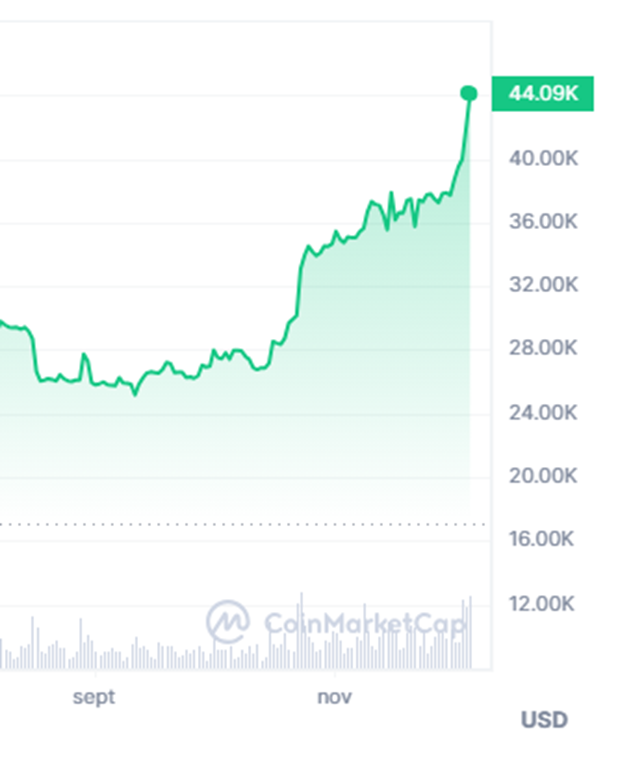Important facts:
-
Banks in the US, EU, Japan, UK and China intervened in times of crisis.
-
Large injections of liquidity usually stimulate the price of Bitcoin.
The recent price increase of Bitcoin (BTC), an asset that is already trading above $43,000, could have several reasons, and one of them has to do with the intervention of the world's five main central banks in the traditional financial market.
Since last October, the central banks of the United States, the European Union, Japan, the United Kingdom and China; were common for the injection of around $350,000 million in the financial systemaccording to Goldman Sachs estimates.
Accordingly graphic In the balance sheets of the five main central banks, the injection of liquidity coincides precisely with the moments when turbulence occurred in the traditional financial market.
Strictly speaking, the injections were made at a time when the traditional financial system still existed HE faced with banking crises, liquidity problems and vertical crashes, remember the financial advisor named Jon Economist.
Although liquidity injections are usually viewed as something that brings benefits to economies, Rather, they tend to encourage spending, which translates into inflation. This is because money in circulation increases, consumption and investment are encouraged, which could lead to an increase in demand and prices for goods and services.
According to the Spanish specialist, the central banks' multi-million dollar financial injection could be interpreted as a covert intervention by the financial markets. “Welcome to the liquidity junkie markets,” he scoffed.
Bitcoin on the rise
Since the start of market intervention by the world's main central banks, more than $350,000 million has been pumped into the financial systemthe price of Bitcoin has only increased.
As can be seen in CoinMarketCap's chart, Bitcoin's price has been steadily rising against the US dollar since last October. In totalSince mid-October, BTC is up 53%when the currency was trading at around $26,800.

In general, when central banks inject liquidity, the price of BTC tends to rise as demand for various risk assets increases. Among these, Bitcoin, derivatives and stocks stand out.
This increases the demand for risky assets responds to inflation and low returns on various investmentswhich opens the window to Bitcoin as an alternative asset to seek refuge in.
This is also true given that Bitcoin, as an asset with limited emissions, tends to increase in value over the long term. This is due to increasing demand while supply becomes scarcer over time.
Additionally, BTC is on the eve of a new bull market driven by various factors. These include the Bitcoin halving, which splits the reward for mining and drives demand over the supply of Bitcoin. And furthermore, the approval of BTC spot price exchange-traded funds (ETFs) by the US Securities and Exchange Commission.
In any case, The price of Bitcoin is determined by supply and demand. The situation is different with the central banks of countries that do not promote real economic growth, but limit themselves to pumping money into the economy without having a solid foundation. A formula that generally ends in crisis.